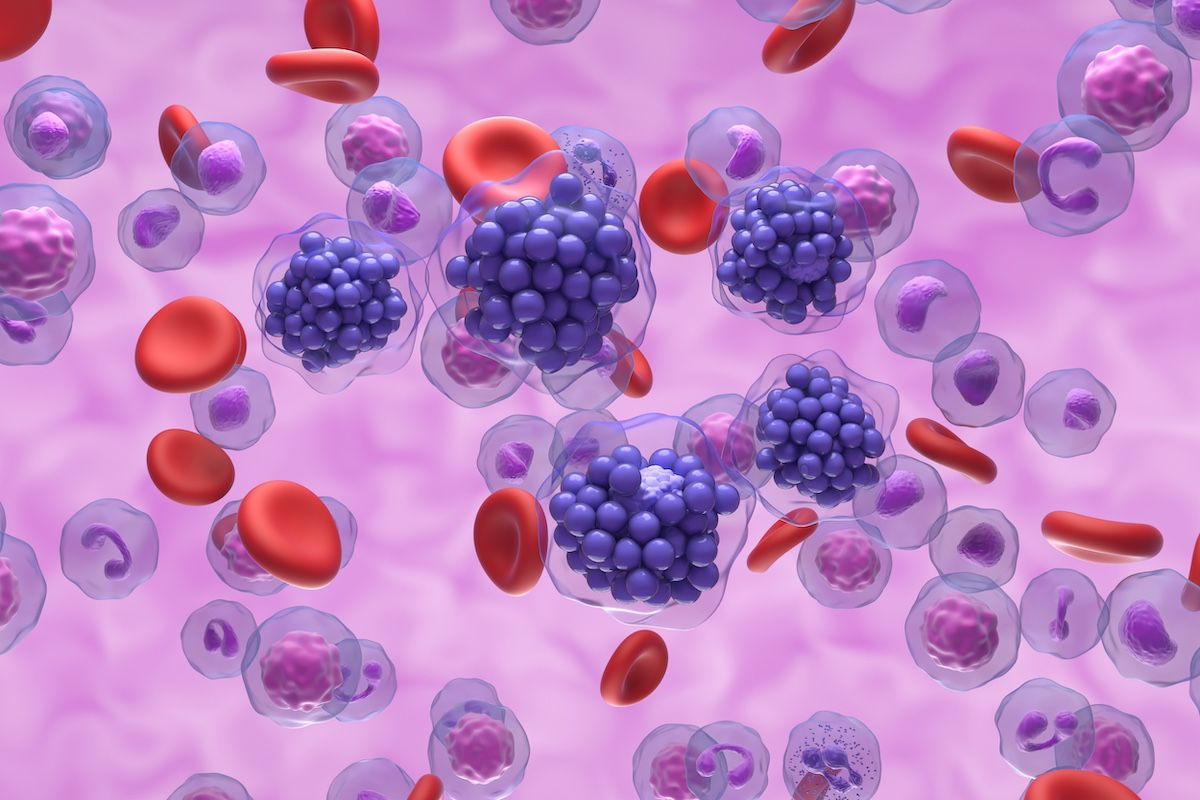News
Article
Case Reports: Managing DLBCL Associated With Papillary Thyroid Carcinoma
Author(s):
Case reports and systematic review found the combination of surgery, chemotherapy, and radiotherapy can effectively manage diffuse large B-cell lymphoma (DLBCL) associated with papillary thyroid carcinoma.
A recent case report and systematic review of 9 additional case studies published in the Journal of Surgical Case Reports highlighted successful treatment approaches involving surgery, chemotherapy, and radiotherapy in patients with diffuse large B-cell lymphoma associated with papillary thyroid carcinoma.1
The primary focus of the study was the case of a 55-year-old woman who presented with a rapidly growing neck mass causing dyspnea, dysphagia, cough, and vomiting. A neck tomography revealed a thyroid mass measuring 8.8 x 6.8 x 6.4 cm with tracheal invasion. Flexible bronchoscopy and laryngoscopy were conducted to assess vocal cords and airway involvement. The patient underwent immediate surgery due to severe obstructive symptoms. Total thyroidectomy and tangential tumor shaving for the tracheal invasion were planned; however, due to tracheal invasion, debulking left lobectomy and left lateral tracheotomy were ultimately performed.
Case studies provide insight into the management of DLBCL and papillary thyroid carcinoma. | Image credit: laszlo - stock.adobe.com

Histopathology results show a micropapillary thyroid carcinoma (0.4 cm). Immunohistochemistry confirmed the presence of diffuse large B-cell lymphoma, with CD20 and BCL2 positivity and CD10 and CD30 negativity. The patient received eight cycles of R-CHOP (rituximab, cyclophosphamide, doxorubicin, vincristine, and prednisone) chemotherapy lasting about 6 months. A follow-up laryngoscopy showed left vocal cord paresis but no visible mass. Before initiating radiotherapy, the patient underwent a completion thyroidectomy due to the aggressive nature of the microcarcinoma. She then received 20 sessions of consolidation radiotherapy, leading to significant improvement and no recurrence at four years follow-up.
The systematic review included 10 cases (including the case above), with patients' ages ranging from 37 to 79 years, and cases were predominantly among females (80%). The most common clinical presentations were dyspnea (50%) and dysphagia (50%) due to a rapidly enlarging neck mass. Hashimoto's thyroiditis was present in 60% of patients, and 40% had micropapillary thyroid cancer.
The majority of diffuse large B-cell lymphoma diagnoses were made postoperatively (90%), with only one case identified preoperatively through core needle biopsy.
All patients underwent surgery, with total thyroidectomy (30%) and lobectomy (20%) being the most common. Chemotherapy was administered in 90% of cases, radiotherapy in 20%, and radioiodine therapy in 10%. The Ann Arbor stage was reported in 4 studies, with 75% of patients classified as stage IE. Long-term outcomes were reported in 5 cases, with 90% of those patients showing no recurrence or metastasis at follow-up.
The optimal approach and necessity of surgery in diffuse large B-cell lymphoma are not clear, as some researchers recommend no surgical intervention for diffuse large B-cell lymphoma, even in patients with severe airway compromise, due to the rapid effect of the treatments.2 Others suggest surgery should be part of treatment and that surgical resection and chemotherapy combined with radiotherapy may improve the patient's prognosis.3
There are no guidelines for properly managing diffuse large B-cell lymphoma cases complicated by a significant trachea defect, and the coexistence of diffuse large B-cell lymphoma and papillary thyroid carcinoma presents a unique management challenge, as the treatment must effectively address both malignancies.
"Treatment must prioritize the tumor with the worst prognosis at diagnosis and may vary by histopathological subtype," the authors concluded. This study suggests that combining surgery, chemotherapy, and radiotherapy can yield favorable outcomes.
References
1. Lincango EP, Serrano LF, Vallejo S, et al. Diffuse large B-cell lymphoma associated with papillary thyroid carcinoma: a case report and systematic review on management and outcomes. J Surg Case Rep. 2024;2024(5):rjad658. doi:10.1093/jscr/rjad658
2. Kesireddy M, Lasrado S. Cancer, Thyroid lymphoma. StatPearls [Internet]. Meghana Kesireddy, University of Texas MedicalBranch, 2024. Accessed June 2, 2024. https://www.ncbi.nlm.nih.gov/books/NBK544282/
3. Vardell Noble V, Ermann DA, Griffin EK, Silberstein PT. Primary thyroid lymphoma: an analysis of the National Cancer Database. Cureus. 2019;11(2):e4088. doi:10.7759/cureus.4088





